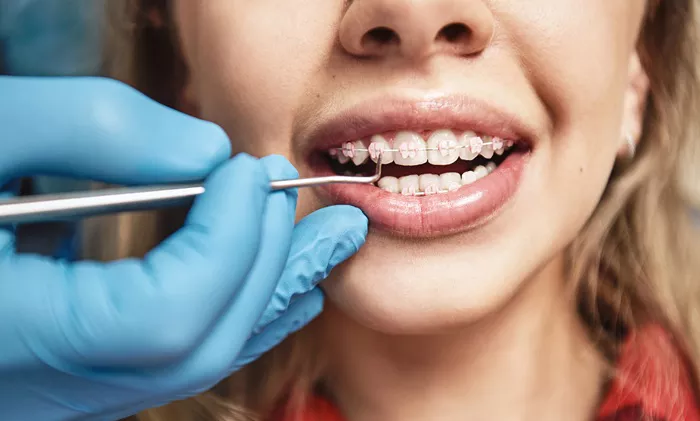Braces are a common orthodontic treatment used to correct misaligned teeth and bite issues. Before braces are placed, several preparatory steps must occur. One of the most crucial stages is taking dental impressions. These impressions help create a detailed map of the patient’s mouth, allowing for customized treatment planning. Many patients ask: how long after impressions do you get braces? This article offers a comprehensive explanation of the timeline, what affects it, and how it relates to conditions like sensitive teeth and gum disease.
What Are Dental Impressions?
Purpose of Impressions
Dental impressions are molds of your teeth and gums. They provide a physical or digital model for creating orthodontic appliances such as braces, aligners, and retainers. Impressions are essential for accurate diagnosis and custom treatment planning.
Types of Impressions
There are two primary types of dental impressions:
Traditional Impressions: Involve soft putty material placed in a tray and inserted into the mouth.
Digital Scans: Use 3D scanning technology for more accurate, comfortable, and quicker impressions.
Time Between Impressions and Braces Placement
Standard Timeline
On average, patients receive braces 1 to 3 weeks after their dental impressions are taken. This time allows for:
- Orthodontic analysis of the impressions
- Designing and ordering brackets and wires
- Scheduling the application appointment
Why the Delay?
The period between impressions and braces placement is necessary for planning. Orthodontists use this time to map out tooth movement, customize treatment devices, and identify risks like gum disease or sensitive teeth that could affect outcomes.
What Happens After Dental Impressions?
Step-by-Step Post-Impression Process
Lab Analysis: The impressions are sent to a lab or analyzed in-house.
Treatment Planning: Your orthodontist develops a detailed strategy for tooth movement.
Fitting Appointment Scheduled: Once materials are ready, a fitting appointment is set.
Custom Appliance Creation
Brackets and wires may need to be customized depending on the patient’s needs. In cases where clear aligners or lingual braces are involved, customization can take even longer.
Factors That Affect the Timeline
Type of Braces
The type of braces you choose impacts how quickly they can be installed:
Metal Braces: Typically ready in 1–2 weeks.
Ceramic Braces: May require 2–3 weeks.
Clear Aligners: Usually take 2–4 weeks due to digital design and production time.
Dental Health Conditions
Patients with underlying dental issues may need additional treatment before braces can be applied. For example:
Sensitive Teeth: May need desensitizing toothpaste or fluoride treatment before braces.
Gum Disease: Must be treated first to prevent worsening during orthodontic treatment.
Availability of Materials
If a specific type of bracket or wire is needed and not in stock, the process can be delayed. Digital systems typically reduce such delays.
Braces and Sensitive Teeth
Impact of Braces on Tooth Sensitivity
Braces can increase sensitivity temporarily due to pressure on the teeth. If a patient already has sensitive teeth, extra care is required. Your orthodontist may recommend fluoride rinses, desensitizing agents, or gentler adjustment schedules.
Tips to Manage Sensitivity
- Use soft-bristled toothbrushes
- Avoid overly hot or cold foods
- Follow professional advice on oral hygiene
Braces and Gum Disease
Why Gum Health Matters
Healthy gums are essential before starting braces. Gum disease can lead to tooth instability, making it risky to move teeth. Inflammation can also cause delays in healing and worsen during orthodontic treatment.
Treatment Before Braces
Patients with signs of gum disease need to undergo deep cleaning, scaling, or periodontal therapy. Braces are typically delayed until the gums are healthy and inflammation is reduced.
Patient Responsibilities Between Impressions and Braces
Maintaining Oral Hygiene
Continue brushing and flossing to prevent plaque buildup. Good hygiene helps avoid delays due to new dental problems.
Attending All Follow-Ups
Missed appointments can delay your braces schedule. Attend all consultations and notify your clinic if changes are needed.
Following Pre-Braces Instructions
Your orthodontist may instruct you to avoid hard foods or begin using specific rinses before braces placement. Follow these instructions to ensure your mouth is in optimal condition.
Alternative Imaging Techniques
3D Scanning Advantages
Many modern orthodontic clinics use intraoral scanners. These create accurate digital impressions, which speed up the planning and fabrication process. With 3D scanning, braces may be applied in as little as one week after impressions.
When Traditional Impressions Are Used
In clinics without digital technology, traditional molds require more time due to physical shipping and manual planning.
Can Braces Be Placed the Same Day as Impressions?
Situations Where It’s Possible
In some urgent or simple cases, same-day impressions and braces placement are possible. However, this is rare and depends on the complexity of the case, the type of braces, and the availability of necessary equipment.
Pros and Cons
Pros: Saves time and reduces multiple appointments.
Cons: Less customization and limited to straightforward cases without gum disease or sensitive teeth.
What If There’s a Delay After Impressions?
Common Causes of Delay
- Insurance approval taking time
- Waiting for gum disease treatment to finish
- Backorders on materials
What You Can Do
Ask your orthodontist for a clear timeline and reasons for any delay. Keep up your oral care routine and be ready for quick scheduling once everything is in place.
Conclusion
Getting braces is a multi-step process that starts with accurate impressions. On average, braces are applied 1 to 3 weeks after impressions, though this can vary based on your specific case, oral health status, and type of braces. Conditions like sensitive teeth and gum disease need to be managed before the application. By following your orthodontist’s guidance and maintaining excellent oral hygiene, you can ensure a smooth and timely start to your braces journey.

